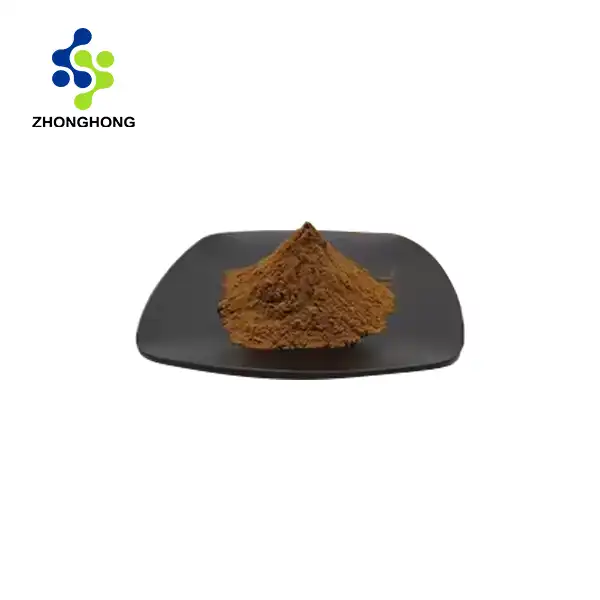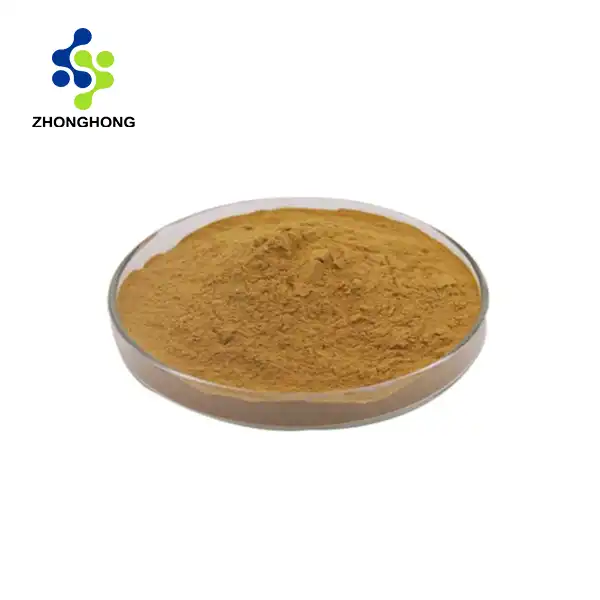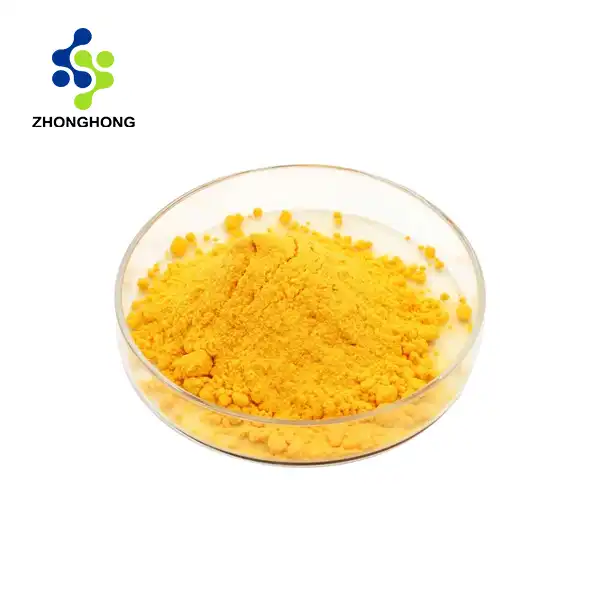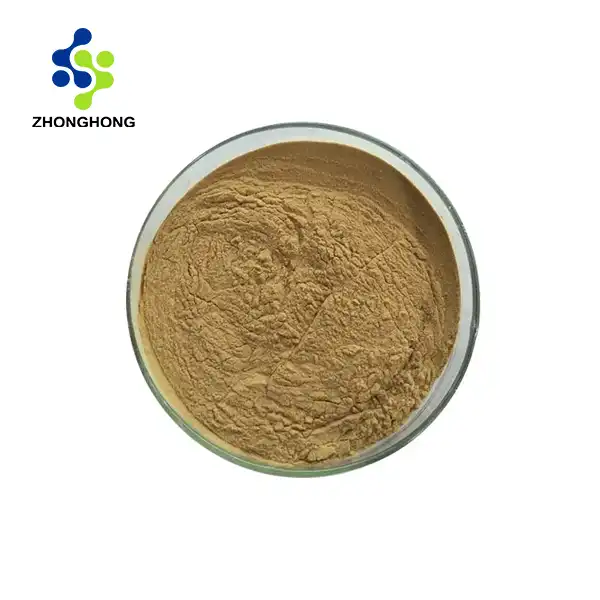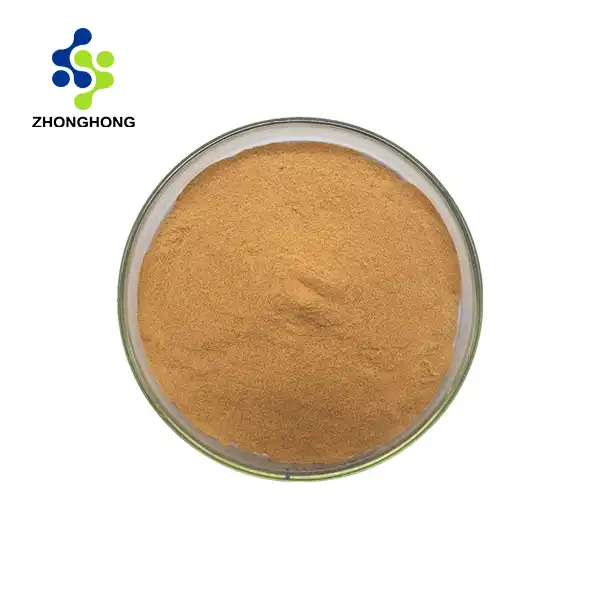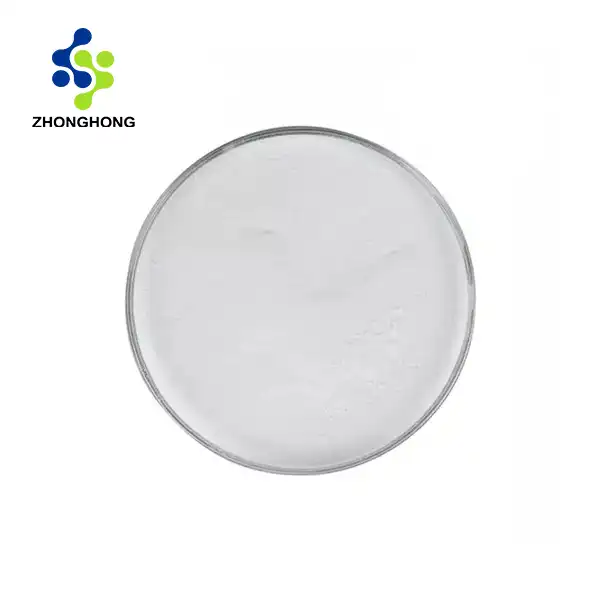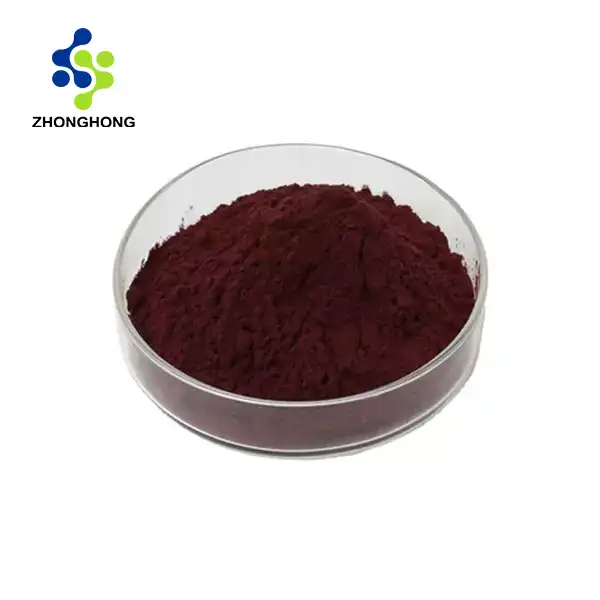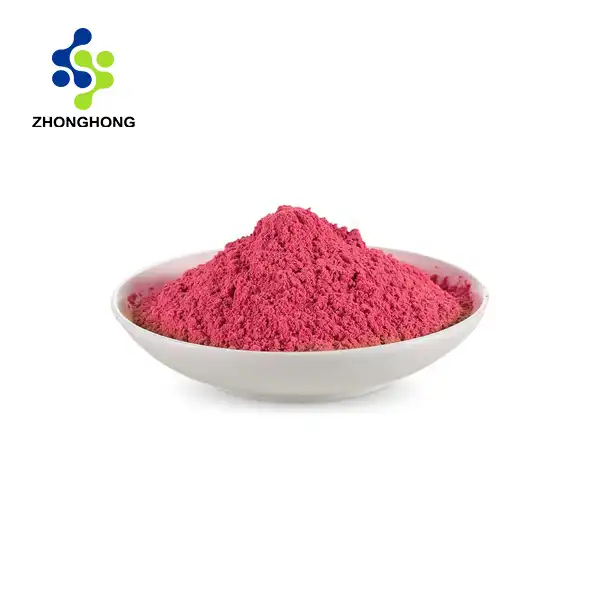Tanshinone IIa: A Powerful Compound from Traditional Chinese Medicine
Origins and Traditional Uses
Tanshinone IIa is derived from the roots of Salvia miltiorrhiza, a plant that has been used in Traditional Chinese Medicine (TCM) for centuries. This herb, known as "Danshen" in Chinese, has been prized for its ability to promote blood circulation, alleviate pain, and treat various cardiovascular conditions. The isolation and identification of Tanshinone IIa as one of the active components of Danshen have led to increased scientific interest in its potential therapeutic applications.
Chemical Structure and Properties
Chemically, Tanshinone IIa belongs to the class of compounds called diterpene quinones. Its unique molecular structure contributes to its diverse biological activities. The compound is lipophilic, allowing it to easily penetrate cell membranes and interact with various cellular targets. This property is particularly advantageous when considering its potential anti-cancer effects, as it enables it to reach intracellular components and influence key signaling pathways involved in cancer progression.
Bioavailability and Pharmacokinetics
Understanding the bioavailability and pharmacokinetics of our product is urgent for its expected improvement as a restorative specialist. Studies have shown that while Tanshinone IIa displays strong organic exercises, its oral bioavailability is generally low because of unfortunate water dissolvability and broad digestion in the liver. Scientists are investigating different procedures to upgrade its bioavailability, including the advancement of novel medication conveyance frameworks and synthetic alterations to further develop its pharmacokinetic profile. These endeavors mean to improve the compound's remedial potential and make ready for its conceivable clinical applications in disease treatment.
Mechanisms of Action: How Tanshinone IIa Combats Cancer
Apoptosis Induction
One of the primary mechanisms by which Tanshinone IIa exerts its anti-cancer effects is through the induction of apoptosis, or programmed cell death, in cancer cells. This process is crucial for eliminating abnormal or damaged cells that could potentially lead to tumor formation. It has been shown to activate various pro-apoptotic pathways while simultaneously suppressing anti-apoptotic factors. For instance, it can upregulate the expression of pro-apoptotic proteins such as Bax and caspases, while downregulating anti-apoptotic proteins like Bcl-2. This dual action effectively tilts the balance towards cell death in cancer cells, making them more susceptible to elimination.
Cell Cycle Arrest
Another significant mechanism of Tanshinone IIa's anti-cancer activity is its ability to induce cell cycle arrest. The cell cycle is a tightly regulated process that controls cell division and growth. In cancer cells, this regulation is often disrupted, leading to uncontrolled proliferation. It has been found to interfere with various phases of the cell cycle, particularly the G0/G1 and G2/M phases. By halting the progression of cancer cells through these critical checkpoints, it effectively slows down or stops tumor growth. This action is mediated through the modulation of key cell cycle regulators such as cyclin-dependent kinases (CDKs) and their inhibitors.
Angiogenesis Inhibition
Angiogenesis, the formation of new blood vessels, is a critical process in tumor growth and metastasis. Tumors require a constant supply of nutrients and oxygen to sustain their rapid growth, which is facilitated by the development of new blood vessels. Tanshinone IIa has demonstrated potent anti-angiogenic properties, effectively starving tumors of their vital blood supply. It achieves this by downregulating pro-angiogenic factors such as vascular endothelial growth factor (VEGF) and matrix metalloproteinases (MMPs). Additionally, it can directly inhibit the proliferation and migration of endothelial cells, which are essential for blood vessel formation. By targeting angiogenesis, Tanshinone IIa not only impedes tumor growth but also reduces the likelihood of cancer metastasis.
Clinical Implications and Future Prospects
Synergistic Effects with Conventional Therapies
The potential of our product extends beyond its use as a standalone treatment. Emerging research suggests that it may enhance the efficacy of conventional cancer therapies when used in combination. For instance, studies have shown that it can sensitize cancer cells to chemotherapy drugs, potentially allowing for lower doses and reduced side effects. This synergistic effect has been observed with various chemotherapeutic agents, including cisplatin, doxorubicin, and paclitaxel. Moreover, it has demonstrated the ability to overcome drug resistance in certain cancer types, offering hope for patients who have become unresponsive to standard treatments. The compound's potential to augment radiotherapy outcomes has also been explored, with preliminary results indicating enhanced radiosensitivity in cancer cells treated with Tanshinone IIa.
Challenges in Clinical Translation
Notwithstanding the promising preclinical outcomes, deciphering the counter malignant growth impacts of Tanshinone IIa into clinical applications faces a few difficulties. One of the essential obstacles is its unfortunate bioavailability and fast digestion in the body. Scientists are effectively chipping away at creating novel medication conveyance frameworks, for example, nanoparticles and liposomes, to further develop the compound's pharmacokinetic profile and improve its remedial adequacy. One more test lies in deciding the ideal measurements and therapy regimens for various disease types. Given the complicated idea of malignant growth and the differed components of activity of it, broad clinical preliminaries are important to lay out its wellbeing and viability in human patients. Also, expected collaborations with different drugs and long haul impacts should be entirely examined before Tanshinone IIa can be considered for far reaching clinical use.
Future Research Directions
The fate of our product in disease treatment looks encouraging, with a few roads for additional investigation. One area of interest is the improvement of our product analogs or subordinates that might have upgraded bioavailability or designated enemy of disease action. Primary adjustments might actually prompt mixtures with improved pharmacokinetic properties while holding or in any event, enhancing the ideal helpful impacts. One more thrilling heading is the examination of it's true capacity in malignant growth counteraction. Provided its capacity to regulate different cell pathways associated with carcinogenesis, the compound might demonstrate significant in lessening disease risk or forestalling repeat in high-risk people. Moreover, the job of this product in focusing on disease undifferentiated organisms, which are much of the time liable for cancer repeat and metastasis, is a region that warrants further investigation. As examination advances, a more complete comprehension of Tanshinone IIa's systems of activity and its cooperations with various malignant growth types will without a doubt arise, making ready for its likely joining into disease treatment techniques.
Conclusion
Tanshinone IIa shows remarkable potential in combating cancer through various mechanisms. While more research is needed, its ability to induce apoptosis, arrest cell cycles, and inhibit angiogenesis makes it a promising candidate for cancer therapy. As studies progress, itmay emerge as a valuable addition to the arsenal of anti-cancer treatments. If you want to get more information about this product, you can contact us at liaodaohai@gmail.com.
_1728976869676.webp)

